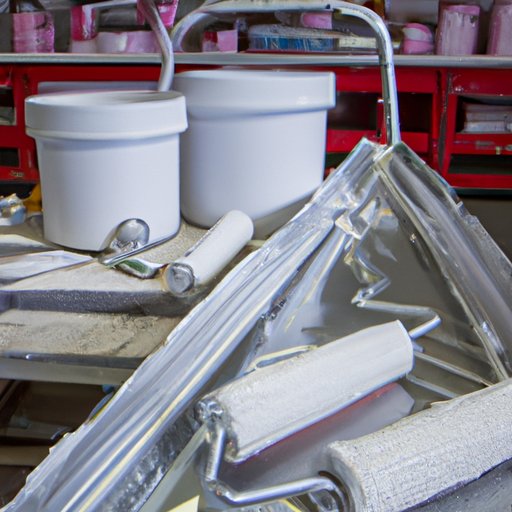Introduction
Painting an aluminum boat is a great way to improve its appearance and protect it from the elements. But if you’re not familiar with the process, it can be intimidating. This article will provide an overview of what’s involved in painting an aluminum boat, from selecting the right paint to applying it correctly. We’ll also discuss how to troubleshoot common problems that arise when painting an aluminum boat.
How to Choose the Right Paint for Your Aluminum Boat
The first step in painting an aluminum boat is choosing the right paint. There are several considerations to keep in mind when selecting paint for aluminum boats. For example, you’ll need to decide whether you want a single- or two-part paint, which type of finish you prefer (glossy, satin, or matte), and what color you want. You’ll also need to consider the environment in which your boat will be used, as some paints are better suited to saltwater than others.
In general, two-part polyurethane paints are the best choice for aluminum boats. They offer excellent protection against the elements and have a longer lifespan than single-part paints. However, they can be expensive and require more preparation time. If you’re looking for a more affordable option, single-part epoxy paints are a good choice, though they may not last as long.
The Benefits of Painting an Aluminum Boat
Painting an aluminum boat offers several benefits. First, it can improve the appearance of your boat. A fresh coat of paint will make your boat look like new and help it stand out from the crowd. Second, painting an aluminum boat provides better protection from the elements. It creates a barrier between your boat and the water, helping to prevent corrosion and other damage caused by exposure to the elements.

Prepping an Aluminum Boat for Painting
Before you start painting your aluminum boat, you need to prepare the surface. This involves cleaning and sanding the surface to remove any dirt, grime, or oxidation. Once the surface is clean and smooth, you’ll need to apply a primer. This helps the paint adhere better to the surface and provides additional protection against the elements. Finally, you’ll need to apply a base coat of paint.
Tips for Applying Paint to an Aluminum Boat
Once you’ve prepped the surface, it’s time to start applying paint to your aluminum boat. To do this, you’ll need to choose the right brush or roller for the job. Synthetic brushes and foam rollers work best for painting aluminum boats. You’ll also need to apply multiple coats of paint, allowing each coat to dry completely before applying the next. Finally, you should finish with a protective top coat for added protection.

Selecting the Right Tools for Painting an Aluminum Boat
When painting an aluminum boat, it’s important to use the right tools. In addition to brushes and rollers, you’ll need protective gear such as gloves, goggles, and a respirator. You’ll also need primers, paints, and sealants specifically designed for aluminum boats. Make sure to read the instructions carefully and follow the manufacturer’s recommendations.

Troubleshooting Common Problems with Painting an Aluminum Boat
Even if you follow all the steps outlined above, there are still some common problems that can arise when painting an aluminum boat. The most common problem is peeling paint, which can be caused by improper preparation or poor application technique. Other issues include bubbling paint, uneven coverage, and fading colors. If you experience any of these issues, try re-cleaning and sanding the surface, applying a new primer, and/or changing your application technique.
Conclusion
Painting an aluminum boat is a great way to improve its appearance and protect it from the elements. To get the best results, you need to choose the right paint and apply it correctly. Considerations when selecting paint include the type of finish, color, and environment. Preparing the surface is also important, including cleaning and sanding, applying primer, and applying a base coat of paint. Using the right tools and techniques will ensure a successful outcome. Finally, troubleshooting common problems such as peeling paint, uneven coverage, and fading colors can help you get the best results.

